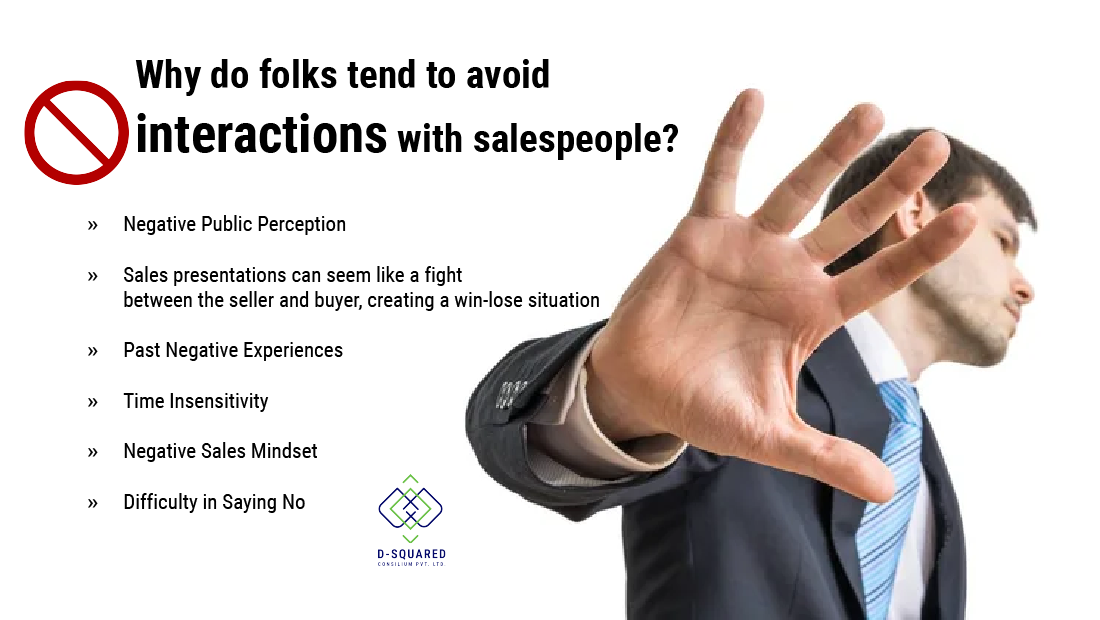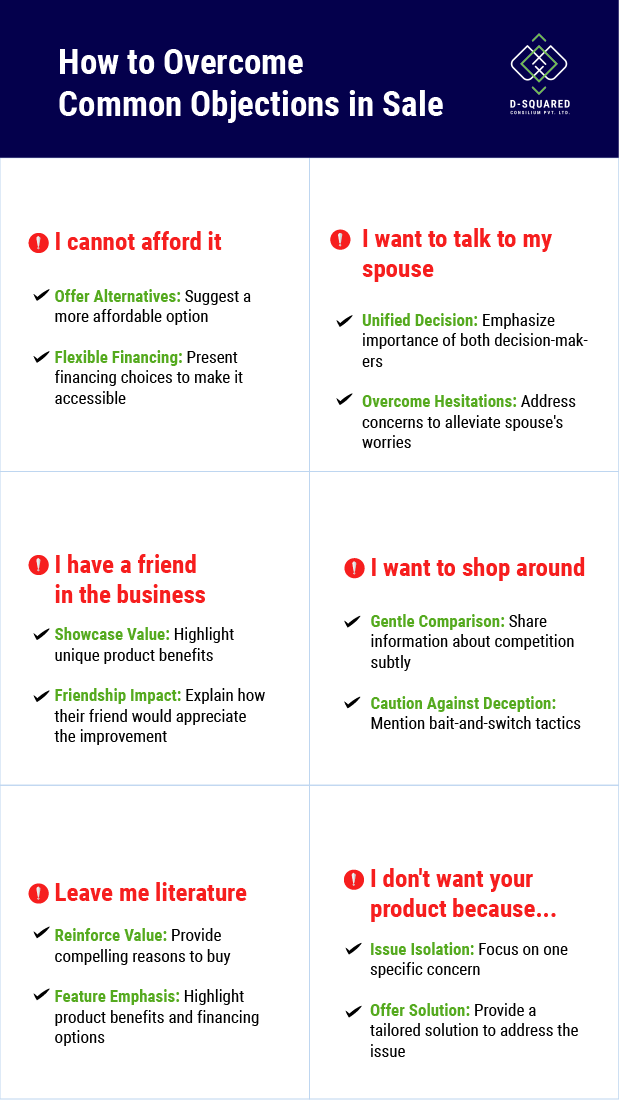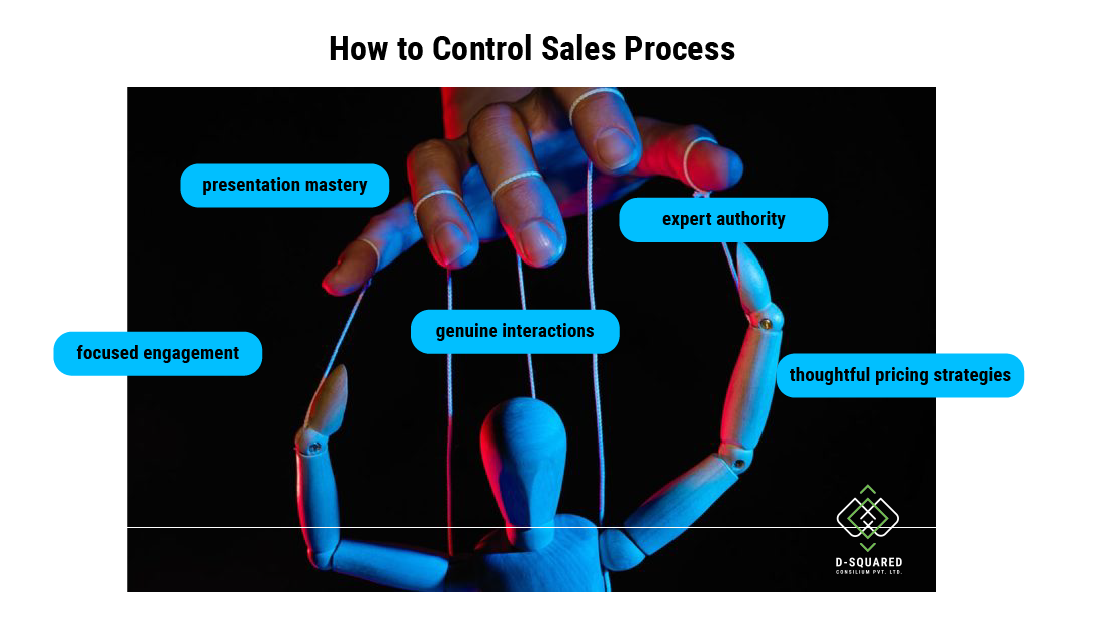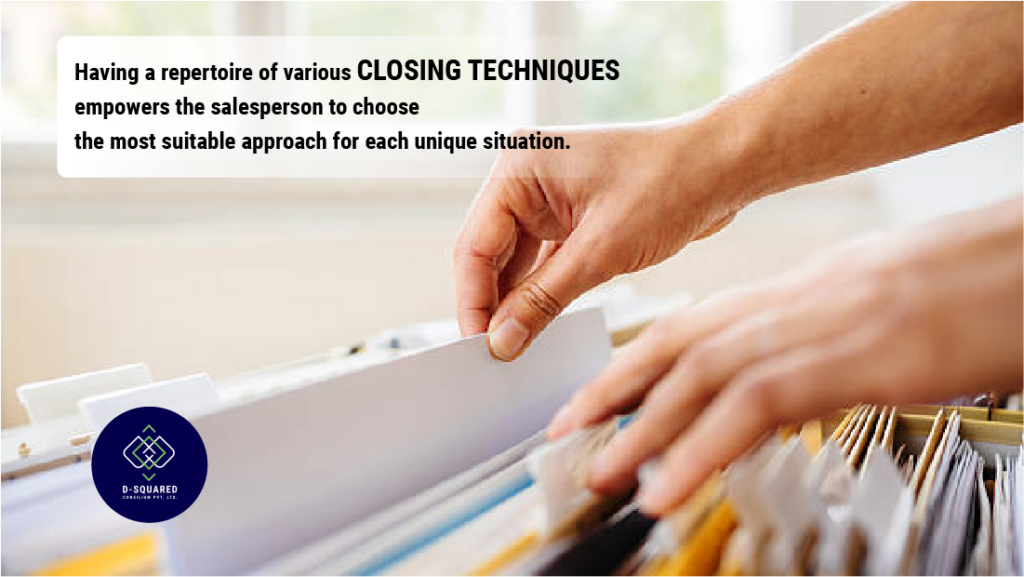The Core Concept
Master the art of sales with Joe Girard’s insightful book, ‘How to Close Every Sale.’ Discover effective sales techniques, closing strategies, and essential sales skills and techniques that will empower you to sell any product or service effortlessly. Learn the fundamental principles and valuable experience-based insights that revolve around a crucial rule: success in sales begins with selling yourself first. Understand how buyers invest in the seller before the product or service, making self-presentation vital to closing deals successfully. Let Joe Girard be your guide to becoming a persuasive and successful salesperson.
Principle 1 : Understand Sales Resistance -
Gaining Insight into the Customer's Viewpoint.

6 Reasons Contributing to the Sales Resistance:
- Negative Public Perception: Salespeople are often stereotyped as cunning and pushy individuals who only care about making a sale.
- Seller-Buyer Adversarial Relationship: Sales presentations can sometimes feel like a battle between the seller and the buyer, leading to a win-lose scenario.
- Past Negative Experiences: Buyers might have encountered unprofessional and manipulative salespeople in the past, creating skepticism and reluctance.
- Time Insensitivity: Salespeople often prioritize their time over the customer’s, leading to a lack of respect for the customer’s schedule.
- Negative Sales Mindset: Some salespeople approach interactions with a pessimistic outlook, assuming prospects are not genuinely interested in buying.
- Difficulty in Saying No: Customers find it uncomfortable to decline offers, making sales presentations challenging at times.
Understanding these points empowers us to be more empathetic and adapt our sales techniques to create positive, cooperative relationships with customers. Let’s strive to be authentic, attentive, and respectful, focusing on building trust and finding solutions that genuinely meet our customers’ needs.
Principle 2 : Begin with Selling Yourself

13 Techniques of Selling Yourself:
- Showcase your company’s reputation. Being associated with a well-known brand name builds credibility and eliminates doubts about doing business with a stranger.
- Believe in what you sell. Successful salespeople are fully convinced of the value their product or service provides. Showcasing personal use of the product adds an extra touch of authenticity
- Cultivate a positive mindset. Banish any negative thoughts and firmly believe you can sell to every prospect you encounter
- Visualize success. Picture yourself completing the sale, with the client signing the order form and handing over payment. What you envision can become reality
- Develop a winning self-image. A positive self-image influences others to believe in you too
- Be prepared. Know everything about your product, company, and competitors. Confidence during presentations stems from being well-informed, leading to a positive self-image
- Exude an appearance of success. Professionalism extends beyond clothing to your office space, transportation, and more
- Use humor wisely. Employ humor to relax and make prospects comfortable, but exercise discretion and good taste
- Make prospects feel important. Show sincere care for your customers. When they feel valued, they are more likely to choose you, even if your proposal was initially one of several options
- Leverage your own environment. If possible, invite customers to your office and subtly use the office space to showcase your firm’s accomplishments and reputation
- Budget for thoughtful gifts. Give relatively inexpensive gifts to prospects and customers to make them feel appreciated
- Be sincere and honest. Earn clients’ trust by being genuine and truthful. Avoid making promises that cannot be fulfilled and refrain from false flattery. Show sincerity through attentive eye contact and active listening
- Ensure a positive overall experience. Strive to create a mutually beneficial transaction, avoiding overemphasizing profits to encourage repeat business
By embracing these principles and genuinely selling yourself, you can build strong and lasting relationships with your customers while achieving success in your sales endeavors.
Principle Three: Embrace the Power of Assuming the Sale

5 Techniques on How Successful salesman Assume the Sale:
- Employ subtle statements that assume the sale. When the prospect raises objections, address them directly and seek specific reasons. Once the concerns are substantially addressed, confidently assume the sale and make another closing attempt
- Offer the prospect choices to act upon, signaling your assumption that they will make a purchase. For instance, ask, “Do you prefer the red or blue model?” or “Would you like your package delivered by freight or by air?”
- Allow the prospect to experience the product or service. Offer them the opportunity to sit behind the wheel of a car or try on a piece of jewelry to foster a sense of ownership
- Choose words that confidently assume the sale. Replace ‘if’ with ‘when’ in your statements. For example, say, “When you own this car” to project a sense of inevitability. Use inclusive language like ‘we’ and ‘let us’ to make the decision-making process a collaborative effort
- Extend your assumption of the sale to repeat orders. Continue providing outstanding service to satisfied customers, reinforcing their decision to choose you
Principle Four: Know How to Read Buying Signals
Some salespeople believe that the ability to read buying signals is an innate talent, but in reality, it is a skill that can be learned and honed.

6 Sales Techniques of Reading Buying Signals:
- Pay attention to the tangible cues. Observe people’s buying habits and preferences. For instance, a prospect wearing luxurious jewelry and stylish clothing might indicate an interest in high-end products like the most expensive car model
- Avoid making assumptions based on stereotypes. Buyer habits can be diverse and may not always align with outward appearances. Surprisingly, a seemingly modest prospect might be willing to purchase the most expensive item
- Encourage prospects to experience the product or service firsthand, and then observe their reactions. When prospects become active participants, various buying signals emerge
- Be an attentive listener. Exceptional salespeople excel at listening, understanding how prospects think and feel through active listening
- Observe prospects in social settings. How they interact with others and engage in conversations can offer insights into their potential buying behavior
- Analyze the prospects’ egos. Individuals with strong egos are more likely to take risks and make bold purchases. On the other hand, those with low self-esteem might hesitate to invest in significant purchases due to fear of making a mistake
Principle Five: Handle Objections Effectively
Salespeople should view objections as signs of interest rather than obstacles. When prospects raise objections, it’s an opportunity for salespeople to demonstrate why the customer should make the purchase.
- Distinguish between false objections and genuine ones. Sometimes, people present false objections to mask their real concerns. Identifying the true objection is crucial for effectively addressing the prospect’s concerns.
- Avoid putting clients on the defensive. Refrain from pressuring or cornering them during the sales process.
Overcome the six most common objections:
- “I cannot afford it”: Offer a low-priced alternative or flexible financing options to showcase the product’s value.
- “I want to talk it over with my spouse”: Ensure all decision-makers are present during the sales presentation.
- “I have a good friend in the business”: Highlight the benefits of the product and how the friend will appreciate the improved situation.
- “I want to shop around”: Share information on the competition subtly and mention bait-and-switch tactics used by some competitors.
- “Leave me some literature and I will get back to you”: Provide more compelling reasons to buy the product, emphasizing attractive features, benefits, and financing options.
- “I do not want to buy your product because…”: Focus on one specific issue and offer a solution to the prospect’s problem.

Principle Six: Learn How To Overcome Procrastination

One of the most challenging objections salespeople face is when a prospect says, “I want to think it over.” In such cases, the prospect isn’t objecting to the company, product, or salesperson; rather, they are hesitant due to fear of making the wrong decision and lack of confidence in an immediate choice.
5 Sales Skills to Overcoming Procrastination :
- Empower the prospect to decide confidently. Highlight the product or service’s benefits and excellent value for money to demonstrate how it can be advantageous for them.
- Assist the prospect in making an informed decision. If the prospect prefers consulting a third party before deciding, offer a comprehensive presentation to that third party.
- Set the stage for prompt action by subtly conveying that a decision is expected. Emphasize the value of time for both the prospect and the seller.
- Appeal to the prospect’s ego. Understand their self-perception and make them feel important, encouraging them to avoid any potential embarrassment of not deciding in due time.
- Share an apt quote or wisdom to motivate the prospect. Well-chosen quotes can inspire prospects to make decisions confidently. Select quotes that resonate with the situation and the procrastinator. For instance, “No decision is difficult to make if you get all the facts” – George S. Patton, Jr.
Principle Seven: Control The Sale
To be an effective salesperson, it’s crucial to maintain control of the sales process and avoid letting presentations become directionless, leaving customers indecisive. Assume the role of authority and lead the way to successful sales.
5 Sales Skills to Overcoming Procrastination :
- Sell with unwavering intensity. Give the prospect undivided attention, eliminating distractions
- Prioritize the sales presentation. Avoid taking calls during the presentation, making the prospect feel valued and ensuring the momentum is maintained.
- Make the sales pitch an engaging fact-finding session. Encourage a two-way conversation with the buyer, allowing them to express their needs and concerns. This fosters sincerity and a genuine desire to assist the prospect effectively.
- Demonstrate authority through comprehensive knowledge and expertise in the field.
- Exercise discretion in quoting prices. If not ready to provide a quote, hold off until the prospect understands the value they will receive for their investment.
By following these sales techniques, you can take charge of the sales process, creating a positive and successful interaction that leaves both the salesperson and the prospect satisfied.

Principle Eight: Understand The Different Closing Techniques

Choice of Closing Techniques:
- Assumptive close: Expect the prospect to make the purchase and confidently proceed with closing the deal.
- Assumptive statement and question close: Make an assumptive statement and seal the deal with an assumptive question. For instance, “I definitely recommend that you buy these two dress shirts because they go perfectly with your new suit. Now, which of these three ties do you want to go with your suit?”
- Minor/Major close: Guide the prospect through a series of easy, minor decisions, culminating in the final major close. For example, “Would you like to handle the payments monthly, quarterly, or annually? Is it okay to use your home address for billing? Would you spell your wife’s first name for me? You do want her as your beneficiary… Please make the check to the company for this amount right here.”
- Little mistake versus big mistake: Convey that not buying immediately would be a significant mistake, while making the purchase now would only result in a minor mistake. For instance, an auto mechanic might say, “If we do not install a new starter right away, it could lead to flywheel damage, resulting in much higher repair costs.”
- Choice of Three: Offer the prospect no more than three choices. For instance, “Which of these three monthly payments would you feel most comfortable with, ma’am?”
- Compromise close: When objections other than price have been addressed and the prospect remains indecisive, offer a compromise solution. For example, “I understand your tight advertising budget, so instead of the half-page, let’s go with the quarter-page.”
- Don’t keep it a secret close: Show genuine appreciation for the prospect’s business. For instance, “Jerry, I won’t keep it a secret. I really want your business.”
- Ben Franklin close: When facing a difficult decision, make a list of the favorable aspects of the sale under a “yes” column and the unfavorable ones under a “no” column. Ensure that the “yes” column is longer.
- Hard to get it close: Tap into the desire for items that are perceived as scarce or hard to obtain. Help the prospect acquire the product or service.
- “Sell it with love” close: Leverage emotional appeal to close the sale, such as appealing to the prospect’s love for their family. For example, “Your wife will be so happy to receive this on her anniversary! I wish my husband would buy me one!”
- Follow the leader close: Highlight prominent people who have made the same purchase, encouraging prospects to follow suit.
With these diverse sales techniques, a salesperson can skillfully navigate through different selling situations and increase their chances of successfully closing the deal.
To avoid procrastination and encourage prospects to take action, it is essential to provide compelling reasons for immediate purchase. The focus should be on selling not only present needs but also the urgency of the opportunity.
Principle Nine: Create A Sense of Urgency
- Offer a limited-time deal. Present an offer that is only valid for a specific period.
- Use the line “Buy before the price increases” when the price hike is definite and not misrepresented.
- Utilize the “Clock is always running close” statement by referencing prospects’ age, time constraints, etc. For instance, create an urgency to buy recreational homes among the elderly, emphasizing their well-deserved life after years of sacrifice.
- Showcase one-of-a-kind products or services that are not readily available, creating urgency when the opportunity arises.
- Create an “auction” scenario and sell to the highest bidder. Foster an environment where multiple buyers compete to acquire the desired product or property, ensuring a sense of urgency.
- Emphasize the importance of timing. Continue highlighting the value and benefits of making a purchase today rather than postponing it to the future.
Principle Ten: Avoid Overselling
Listen to the prospect and avoid overselling, as pushing too hard may deter them from making the purchase
4 Ways to Avoid Overselling:
- Shift away from the “fear of rejection” mindset. Salespeople should be confident in their abilities and believe that the prospect will make a positive decision. Embrace healthy self-esteem to overcome the fear of the prospect saying no.
- Avoid overwhelming the prospect with unnecessary details. Information overload can confuse the prospect and hinder decision-making. Identify their specific needs and focus on how the product or service meets those needs effectively.
- Allow the prospect space and time to think. Give them breathing room and periods of silence during the sales process, enabling them to process the information and arrive at a decision comfortably.
- Use the sales close, “Have you sold yourself yet?” or “Should I continue to tell you more?” Gauge the prospect’s response, and if it’s positive, move forward to close the sale. In case of an initial negative reply, revisit the presentation and try the close again later.
Principle Eleven: Go All or Nothing

How to do “Make or Break” Selling:
- Prevent prospects from joining the call-back club. Avoid giving them the option to think it over and potentially miss out on a sale. A skilled salesperson ensures prospects make timely decisions.
- Recognize the law of diminishing returns. The first presentation carries the most significant impact, with all the facts and momentum in place. As time passes, the chances of closing the sale decrease as prospects cool off.
- Use the line, “I am sorry, but I do not make call-backs.” Emphasize the importance of making the buying decision during the initial presentation.
- Aim for substantial orders. Prioritize generating significant orders that make the effort worthwhile. Encourage prospects to consider multiple products or services, leading to more substantial sales.
- Remember that no single prospect can make or break a salesperson. Maintain composure and apply gentle pressure on prospects without fear of losing the sale.
- Keep the customer’s best interests in mind. Utilize high-pressure selling techniques that assist prospects in making confident decisions without causing discomfort.
- By employing these effective sales techniques, a salesperson can increase the likelihood of closing deals during the first presentation, fostering positive customer relationships and achieving greater success in the sales process.
Principle Twelve: Prevent Buyer’s Remorse
To ensure customer satisfaction and prevent buyer’s remorse, it’s crucial to handle the post-sale phase thoughtfully. Avoid situations where prospects feel like they made impulse purchases or were deceived into buying something they didn’t want. The key is to maintain a positive relationship with the customer even after the sale is closed.
Tips to Keep Buyer's Remorse in Check:
- Express gratitude. Always say “thank you” courteously after every sale. Make the customer feel confident about their buying decision.
- Offer congratulations. Acknowledge the customer’s wise choice with a positive remark like “You made an excellent decision. Congratulations!”
- Involve companions. Address the statement “You are lucky” to the person or family accompanying the buyer, emphasizing the value of the purchase.
- Don’t rush off. After closing the sale, don’t hurriedly leave the scene. Instead, show the customer that their best interest is the priority. Reinforce the salesperson’s trustworthiness, reducing the likelihood of buyer’s remorse and generating potential referrals.
- Immediate involvement. Ensure the customer takes possession of the product or service right away. This minimizes second thoughts and reinforces the value of the purchase.
- Prompt follow-up. Stay in touch with the customer through phone calls or visits within a day or two. This shows genuine care and reinforces the customer’s decision.
- Understand the reasons behind the purchase. Listen attentively to the client as they explain why they bought from you. This process not only eliminates buyer’s remorse but also reaffirms the customer’s trust in the salesperson and provides valuable insights for future sales techniques.
By employing these customer-centric sales techniques, a salesperson can create positive customer experiences, foster trust, and reduce the chances of buyer’s remorse, ensuring that each sale remains a successful and satisfied customer.
Principle Thirteen: Remember Sales Begin After The Sale
- The Journey Doesn’t End with the Sale – It’s Just the Start
- Top-notch salespeople are dedicated to delivering exceptional service to their customers.
- Represent a company that is genuinely committed to serving its customers.
- Provide such outstanding service that customers would feel hesitant to consider another business.
- Maintain regular contact with customers to build strong and enduring relationships.
- Always stay prepared when engaging with customers.
